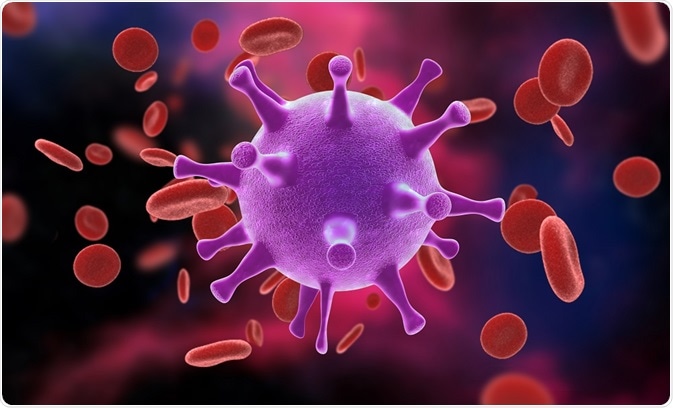The Baltimore Classification System is a scheme for classifying viruses based on the type of genome and its replication strategy. The system was developed by David Baltimore.
 Credit: Giovanni Cancemi/Shutterstock.com
Credit: Giovanni Cancemi/Shutterstock.com
Viruses do not contain a complete system for protein translation; therefore, every virus is dependent on host translational machinery. The Baltimore system is based on how viruses use that machinery. Using this classification system, messenger RNA (mRNA) is at the center, and different pathways to mRNA from DNA or RNA genomes denote the different classes.
The Baltimore Classification System initially included six classes of viruses. However, a seventh class was added to accommodate the gapped DNA genome of Hepadnaviridae (hepatitis B virus).
The seven classes of viruses in the Baltimore Classification System are as follows:
Class I: Double stranded DNA (dsDNA) viruses
A double stranded DNA virus enters the host nucleus before it begins to replicate. It makes use of the host polymerases to replicate its genome, and is therefore highly dependent on the host cell cycle. The cell must therefore be in replication for the virus to replicate.
Examples of Class I viruses include Herpesviridae, Adenoviridae, and Papoviridae.
Class II: Single stranded DNA (ssDNA) viruses
Most ssDNA viruses have circular genomes and replicate mostly within the nucleus by a rolling circle mechanism. Some examples of Class II viruses are Anelloviridae, Circoviridae, and Parvoviridae.
Class III: Double stranded RNA (dsRNA) viruses
Double stranded RNA viruses replicate in the core capsid in the host cell cytoplasm and do depend as heavily on host polymerases as DNA viruses. The genomes of Class III viruses may be segmented, and unlike viruses with more complex translation, each gene codes for only one protein.
Examples of Class III viruses include Rheoviridae and Birnaviridae.
Class IV: Single stranded RNA (ssRNA) viruses
Class IV ssRNA viruses have positive-sense RNA genomes, meaning they can be directly read by ribosomes to translate into proteins. They are further divided into viruses with polycistronic mRNA and those with complex transcription.
Polycistronic mRNA is translated into a polyprotein that is subsequently cleaved to form separate proteins. Viruses with complex transcription use ribosomal frameshifting and proteolytic processing to produce multiple proteins from the same gene sequences.
Examples of some Class IV viruses are Coronaviridae, Flaviviridae, Astroviridae, and Picornaviridae.
Class V: Single stranded RNA (ssRNA) viruses
Class V viruses have a negative-sense RNA genome, meaning they must be transcribed by a viral polymerase to produce a readable strand of mRNA. The genomes of Class V viruses may be segmented or non-segmented.
Some viruses in Class V are Orthomyxoviridae, Paramyxoviridae, and Rhabodviridae.
Class VI: Positive-sense ssRNA reverse transcriptase viruses
Group VI viruses have a positive sense, single-stranded RNA genome, but replicate through a DNA intermediate. The RNA is converted to DNA by reverse transcriptase and then the DNA is spliced into the host genome for subsequent transcription and translation using the enzyme integrase.
Group VI includes retroviruses such as HIV, as well as Metaviridae and Pseudoviridae.
Class VII: Double stranded DNA (dsDNA) reverse transcriptase viruses
Class VII viruses have a double-stranded DNA genome, but unlike Class I viruses, they replicate via a ssRNA intermediate. The dsDNA genome is gapped, and subsequently filled in to form a closed circle serving as a template for production of viral mRNA. To reproduce the genome, RNA is reverse transcribed back to DNA. Hepatitis B virus is a Class VII virus.
Sources:
[Further reading: virology, virus vector, le
Last Updated: Feb 26, 2019